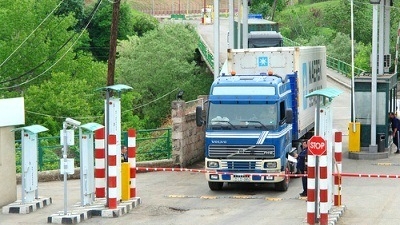One positive economic trend that has gained momentum over the last year is an ongoing diversification of markets for exports coming from the EU11. While more traditional trade with European Union neighbors like Germany, Greece, and Austria remain important, exports to a number of countries outside of the EU market have now gained prominence– in particular, exports to the United States, Ukraine, and Russia.
“Although this expansion into non-EU markets did not fully compensate for the weaker export demand we saw from the EU itself, it is nonetheless a positive trend which will continue to prop the EU11 economic performance,” says Gallina A. Vincelette, Senior Economist at the World Bank and lead author of the latest EU11 Regional Economic Report, which looks at economic trends in the region.
The one country which stood out most for its role in this new diversification of trade in the region was Russia – accounting for approximately 25 percent of export growth from EU11 countries to countries outside of the European Union. As the newest member of the World Trade Organization (WTO), Russia has been experiencing changes to its import and export markets as a result of the various economic guidelines put forth by this organization. These changes have had an immediate impact on trade with the EU11 region. Declining tariffs for imports into Russia and eroding trade barriers have helped fuel an upsurge in trade by allowing goods from the EU11 to flow more freely into Russia’s $2 trillion economy and sell at more competitive prices.
Although the overall extent to which lower tariffs alone are driving Russia’s growing role as a significant importer of goods from EU 11 countries is unclear, they seem at least to be a factor in this recent gravitation of EU11 goods toward the Russian market. With foreign import tariffs on commercial light trucks dropping as a result of Russia’s accession into the WTO, the impact on EU11 exports in this sphere was immediately obvious –exports of machinery and transport equipment grew by more than 23 percent between 2011 and 2012, accounting for more than half of the region’s export growth to Russia, with, exports of road vehicles accounting for almost 37% of this growth, while specialized and general industrial machinery combined to account for an additional 26% of this total.
With only limited growth expected for the EU11 region in 2013, these economic gains are taking on increased importance. By building on positive trends such as market diversification and stable levels of FDI, countries in the EU11 are positioning themselves to better exploit economic opportunities in an environment of limited global growth. By laying these types of foundations during times of relatively low growth, countries in the EU11 can thereby pave a way toward a strong economic recovery that may just come sooner rather than later.

